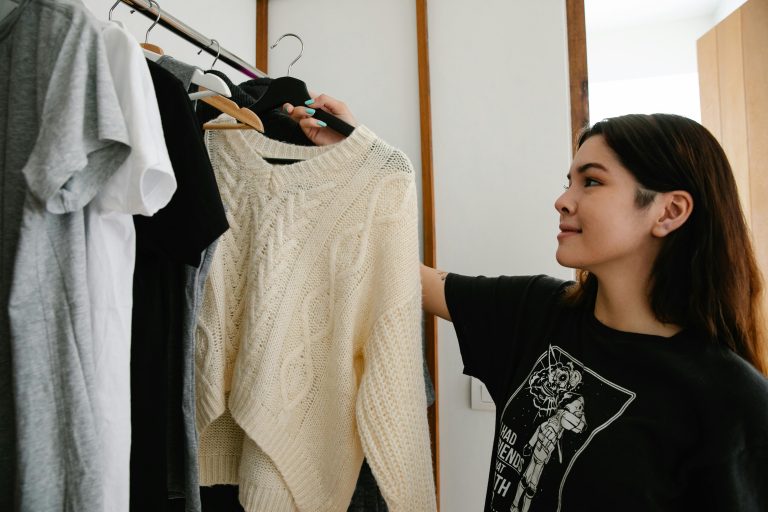Fast fashion has dominated the retail landscape for years, offering quick access to trendy clothing at low prices. But as awareness grows around its environmental impact, ethical concerns, and short-lived quality, many people are choosing to step away from disposable fashion and build wardrobes that are more intentional, sustainable, and reflective of personal style. Curating your closet is not just about buying less; it’s about buying better. It’s a process that encourages thoughtful choices, long-term value, and a deeper connection to what you wear.
Understand Your Style and Lifestyle
The first step in curating a meaningful wardrobe is understanding your personal style and how it intersects with your lifestyle. Take time to assess what you truly enjoy wearing and what makes you feel confident. Look at the pieces you reach for most often and identify patterns in color, silhouette, and fabric. Are you drawn to classic tailoring, relaxed bohemian styles, or minimalist neutrals?
Equally important is considering your daily routine. A curated closet should support your life, not complicate it. If you work from home, your wardrobe might lean toward comfortable yet polished pieces. If you travel frequently, versatility and packability become priorities. By aligning your wardrobe with your lifestyle, you ensure that every item has a purpose and earns its place.
Focus on Quality and Longevity
Breaking up with fast fashion means shifting your focus from quantity to quality. Instead of buying multiple inexpensive items that wear out quickly, invest in fewer pieces that are well-made and designed to last. Look for natural fabrics like cotton, linen, wool, and silk, which tend to age gracefully and feel better against the skin. Pay attention to construction details such as reinforced seams, lined interiors, and durable finishes.
Quality clothing may come with a higher price tag, but it often saves money in the long run by reducing the need for constant replacements. It also contributes to a more sustainable fashion cycle by minimizing waste. When you choose garments that are built to last, you build a wardrobe that supports both your values and your style.
Build a Versatile Foundation
A curated closet thrives on versatility. Start by building a foundation of timeless essentials that can be styled in multiple ways. These might include a tailored blazer, a pair of well-fitting jeans, a crisp white shirt, and a neutral-toned sweater. These pieces serve as the backbone of your wardrobe and can be dressed up or down depending on the occasion.
From there, add items that reflect your personality and seasonal needs. For warmer months, lightweight dresses, breathable tops, and relaxed trousers are ideal. If your lifestyle includes beach outings or resort travel, consider incorporating stylish beach cover ups that offer both style and practicality. These garments often feature elegant silhouettes and comfortable fabrics, making them perfect for layering over swimwear or pairing with sandals for a casual lunch. Choosing pieces that serve multiple functions helps reduce clutter and enhances the usability of your wardrobe.
Practice Mindful Shopping
Mindful shopping is a cornerstone of curating a closet. It involves slowing down the buying process and asking key questions before making a purchase. Do I really need this? Does it complement what I already own? Will I wear it often? Is it made ethically and sustainably?
Avoid impulse buys and trend-driven purchases that may lose appeal quickly. Instead, keep a running list of wardrobe gaps or items you’ve been searching for. When you do shop, prioritize brands that align with your values and offer transparency about their sourcing and production practices. Supporting responsible fashion not only benefits the planet but also contributes to a more meaningful relationship with your clothing.
Edit Regularly and Let Go Thoughtfully
Curating your closet is an ongoing process. Regularly assess your wardrobe to identify what’s working and what’s not. Let go of items that no longer fit, feel uncomfortable, or don’t align with your current style. This doesn’t mean discarding everything at once, but rather making thoughtful decisions over time.
When parting with clothing, consider donating to local charities, selling through resale platforms, or repurposing fabrics creatively. The goal is to reduce waste while giving your garments a second life. Editing your closet helps maintain clarity and ensures that every item you own adds value to your daily dressing experience.
Conclusion
Breaking up with fast fashion is a powerful step toward building a wardrobe that reflects your values, supports your lifestyle, and enhances your personal style. By focusing on quality, versatility, and mindful choices, you can curate a closet that feels intentional and empowering. This shift not only benefits the environment but also transforms the way you engage with fashion. A curated wardrobe is a reflection of who you are and how you choose to show up in the world.

